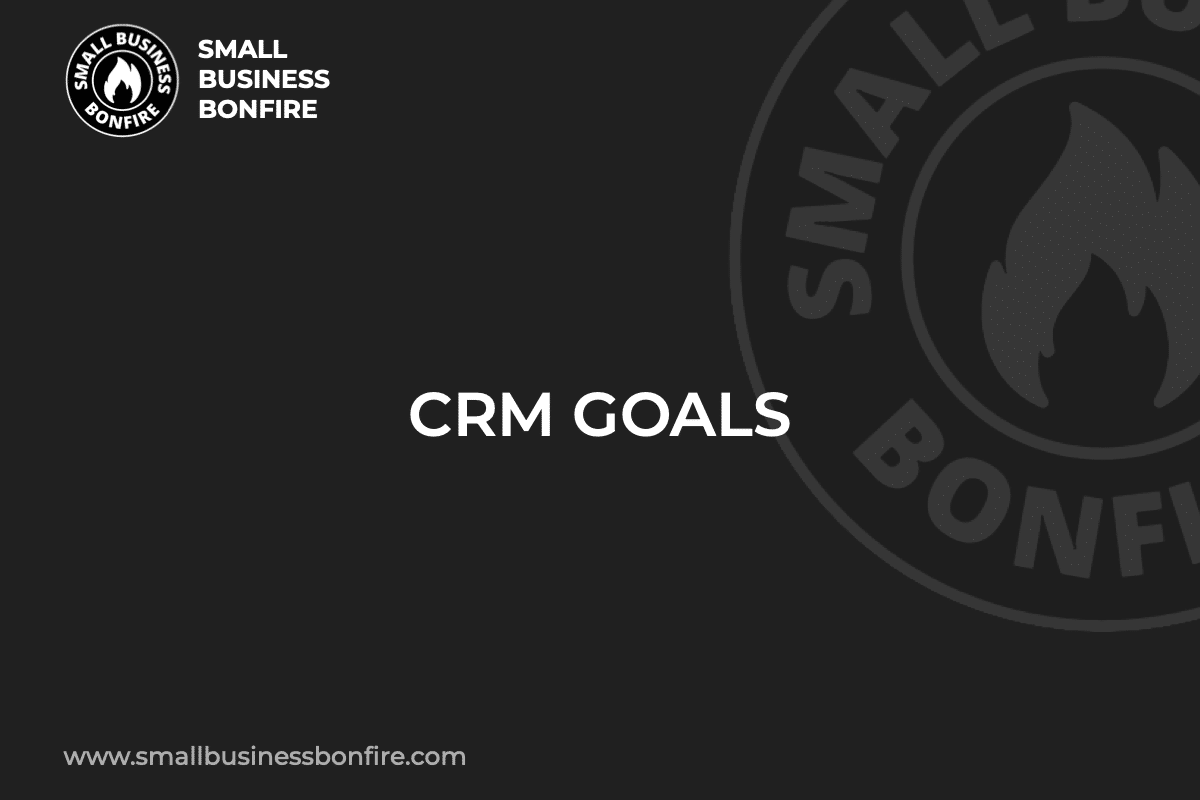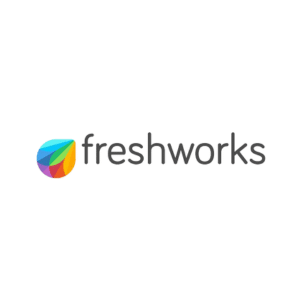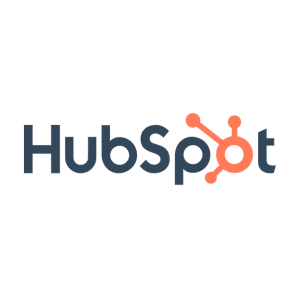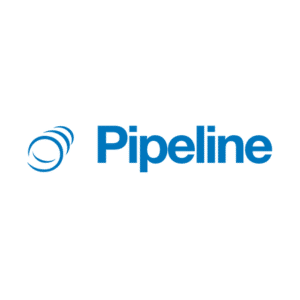Are you ready to take your customer relationships to the next level? Setting goals for your customer relationship management (CRM) strategy is the first step in helping your small business grow and succeed.
Without a clear and solid plan, it’s easy to lose focus on what you want your CRM to achieve, and you may waste precious time and resources.
Don’t worry; I’m here to help! My name is AJ, and I recently sold my small business for multiple seven figures.
Now I travel the world with my wife, helping other entrepreneurs realize their business dreams. With over ten years of experience, I have a few tips to help you set CRM business goals.
So, grab that cup of coffee, put your feet up, and let’s get started!
Key Takeaways
- A good CRM helps keep a company's entire team on the same page
- CRM software can assist small businesses in setting their main CRM goals
- Setting explicit CRM goals can have a significant impact on a company's success
Related Reading: Small Business CRM
SBB Featured Partners
What Are Customer Relationship Management (CRM) Goals?
Customer relationship management (CRM) goals are targets and objectives business owners set to improve their relationship with their potential and existing customers.
The main intention of CRM goals is to build customer loyalty and trust to develop engaging customer experiences that will keep them coming back for more.
CRM goals can vary from company to company, but some common ones include:
- Increasing sales and revenue
- Enhancing customer retention
- Improving customer experience
- Gaining valuable insights about customers
Achieving this requires a strong business strategy, a better understanding of customers’ needs, wants, and behaviors, and implementing the right CRM system to support these goals.
By setting specific goals, businesses can focus their efforts and track their progress toward accomplishing them.
Why Do You Need Goals for Your CRM?
Having clearly defined goals for your CRM software is crucial for maximizing its benefits for your small business.
How can you measure your CRM’s success if you don’t understand what you want your CRM to achieve?
CRM goals provide a roadmap to follow and help your sales, marketing, and customer support teams stay on track.
Setting specific targets for your CRM can significantly impact your company, such as increasing customer loyalty and satisfaction, improving lead generation, and boosting overall revenue.
For instance, if one of your goals is to increase customer retention, you can use your CRM to track:
- What products or services do customers prefer
- How satisfied customers are with your offerings
- How often do customers return to your business
This data can then inform your marketing, sales, and customer service strategies, allowing you to tailor your efforts to meet your current customers’ needs and preferences while measuring your progress over time and making necessary adjustments.
What Is a SMART CRM Goal?
Regarding CRM goals, it’s essential to be as specific and actionable as possible to maximize your resources. That’s where SMART goals come in!
SMART is an acronym that stands for:
- Specific
- Measurable
- Achievable
- Relevant
- Time-bound
Each SMART goal has its unique characteristics that can help ensure that your CRM efforts are targeted and effective.
For instance, specific goals clearly state what needs to be accomplished.
Measurable goals allow progress to be tracked and measured against benchmarks or targets.
Achievable goals are challenging yet attainable within the given resources that are available.
Additionally, relevant goals support the business’s overall objectives that align with your company’s vision and mission.
Lastly, time-bound goals have a set deadline for their completion.
In my experience, SMART goals also help to motivate employees, enhance communication, and foster a culture of continuous improvement.
Whether you’re trying to increase customer retention, improve sales conversion rates, or manage customer complaints, SMART CRM goals are essential for a successful business to stay competitive in today’s market.
Top CRM Objectives
Now that you know what CRM goals are and why they’re important, let’s look at some of the most popular CRM objectives that small businesses should consider implementing.
Increase Sales
One of the top CRM objectives for small businesses is increasing sales. By collecting and organizing client data in a centralized platform, sales teams can better understand their customers’ needs and behaviors.
With this knowledge, they can provide personalized recommendations, targeted promotions, and more effective follow-up communication.
Additionally, CRM systems can help identify up-selling and cross-selling opportunities, track the progress of sales leads, and monitor sales performance.
All of these capabilities can contribute to boosting revenue and profitability.
Shorten the Sales Cycle
Another popular CRM goal is to shorten the sales cycles. By streamlining processes and automating repetitive tasks, your sales and marketing teams can save time and resources while increasing efficiency.
CRM systems can be used to send:
- Schedule appointments
- Track customer interactions
- Automated follow-up emails
Businesses can identify potential customers and prioritize their efforts using CRM software to monitor leads, prospects, and customer interactions.
This can lead to a more targeted and personalized sales process approach, allowing businesses to close deals faster.
Lower Your Customer Acquisition Cost
As a small business owner, one of your top CRM objectives should be to reduce your customer acquisition cost (CAC).
Your CAC is the total amount of money you spend on marketing and sales to acquire new customers.
For example, suppose you find that customers who come through social media campaigns tend to have a higher lifetime value than those who come through email marketing.
In that case, you can allocate more resources to social media and reduce spending on email.
Lowering your CAC cost can improve your company’s profitability and revenue over time.
One way to do this is by leveraging consumer data to identify the most profitable types of customers and tailoring your marketing campaigns accordingly.
Improve Your Buyer’s Journey
Improving the buyer’s journey should also be at the top of the list of CRM objectives.
This means understanding the customer’s needs and preferences throughout their entire interaction with your business.
Companies can track customer behavior using a CRM system and cater their marketing efforts to each individual.
This CRM strategy allows them to deliver personalized and timely communications and is crucial for building customer loyalty, engagement, and satisfaction rates.
Additionally, improving the buyer’s journey can lead to increased sales and revenue, as happy customers are more likely to recommend the business’s products and services to others through customer referrals and become repeat customers themselves.
Increase Operational Efficiency
Moreover, boosting operational efficiency is another major CRM goal that can benefit any small business.
This means streamlining the workflow to save time and resources, reduce errors, and improve productivity.
By automating repetitive tasks and centralizing consumer data, companies can cut down on administrative tasks and focus on core business activities that generate revenue and business growth.
This translates to more time for employees to focus on other important tasks, such as improved customer satisfaction, increasing loyal customers, and higher profits.
Increase Customer Retention
Retaining customers is also a key CRM objective that businesses should focus on.
Why? Because it can be much more expensive to acquire new customers than it is to keep an existing one.
With an effective CRM system, companies can collect and use consumer data to identify opportunities for building long-term relationships.
CRM software can also help business owners identify which customers are at risk of leaving (known as customer defection) and take proactive measures to prevent it, such as offering incentives like loyalty programs or resolving customer inquiries quickly.
Increase (Measurable) Customer Satisfaction
Furthermore, increasing customer satisfaction is one of the most essential CRM goals. This means putting your customers’ needs at the center of everything you do and providing them with a positive experience from start to finish.
By surveying each customer interaction, companies can measure customer satisfaction scores and use them to manage and better understand customer relationships.
This type of attention to detail can go a long way in building a strong customer base, which could lead to higher customer acquisition rates and increased total revenue generated.
Get Better Customer Data
Finally, collecting and analyzing customer data regarding potential clients and existing customers is a great way to reach your CRM goals.
With access to this information, businesses can gain invaluable insights into consumer behaviors, needs, preferences, and repeat purchases that can help guide their future CRM strategy and sales process.
For example, companies can use this data to find out the following:
- What type of messages your customers respond best to
- How long it takes for customers to become repeat buyers
- Which products or services are most popular with their best customers
By leveraging client data correctly, businesses can use it to personalize their marketing campaigns and customer journey.
How to Measure CRM Goals
While running a small business over my decade-long career, I’ve learned one valuable lesson—setting CRM goals is important, but it’s even more important to measure them.
Some of my favorite methods include monitoring the following:
- Quarterly sales
- Customer acquisition cost
- Customer turnover metrics
- Won lead index
- Net promoter score
- Customer effort score
- Rate of renewal
Let’s discuss each in further detail!
Quarterly Sales
Tracking your sales performance quarterly can help you understand if you’re progressing toward your CRM goals.
For reference, if you aim to acquire new customers, you might track the number of new leads generated and conversions every quarter.
It’s also essential to look at which products or services are selling the most and where these sales are coming from.
With accurate reporting and analysis tools, you can identify which customer segments respond positively to your CRM efforts.
Customer Acquisition Cost
As I previously mentioned, it’s essential to monitor your CAC to ensure your business is overspending its resources on marketing and sales activities.
The best way to calculate it is to divide the total cost of your marketing and sales efforts by the number of customers you gained during a certain period.
This is a crucial metric to track as it helps you see how effectively your efforts attract prospective customers.
Ideally, you want to see your CAC decrease over time as you become more efficient at acquiring more customers.
Customer Turnover Metrics
Measuring customer turnover involves monitoring the number of customers who stop doing business with you over time.
Analyzing this metric can provide valuable insights into the effectiveness of your CRM efforts.
To measure this metric accurately, it’s essential to keep detailed customer interactions and sales planning records.
By collecting and analyzing this data, you can better understand how your CRM efforts impact customer satisfaction and, ultimately, your bottom line.
Won Lead Index (WLI)
Another valuable metric to watch out for is the won lead index, which can help you evaluate the value of your sales team.
It is beneficial for small businesses, as it lets you quickly identify areas where your sales team could improve.
This index estimates the proportion of leads that convert into actual sales and can be calculated by dividing the number of closed won deals by the total number of leads generated.
Tracking your WLI over time can help you determine how to allocate resources effectively, where to adjust your investments, and whether your adopted strategy works.
Net Promoter Score (NPS)
The net promoter score is one of the most widely-used customer satisfaction metrics.
This simple score measures how likely customers are to recommend your business to others, which can provide valuable insights into your CRM efforts.
It works on a scale of 0-10, with 0-6 as detractors, 7-8 as passive, and 9-10 as promoters.
To calculate this metric, you need to survey a sample of your customers and ask them the probability that they would suggest your products or services to other potential customers.
You can use the feedback to ask follow-up questions to customers who give low scores and use their responses to make changes that will provide them with a more personalized experience and boost your NPS over time.
Customer Effort Score (CES)
Additionally, the customer effort score allows you to evaluate how simple it is for your customers to do business with you.
By tracking your CES over time, you can get a clear indication of whether you’re making it easier or harder for your customers to get what they need.
A high CES suggests that there are things you could be doing better to streamline the customer experience, whereas a low CES indicates that you’re doing a good job of making things easy for your customers.
Moreover, CES can help you to identify pain points in your customer experience and make improvements that will keep your customers happy and coming back for more.
Rate of Renewal
Lastly, the rate of renewal can help you determine how well you retain customers, which is a critical aspect of building a successful business.
This metric is essentially the percentage of customers who continue to do business with you after their initial (or previous) purchases or contract period has expired.
If your CRM strategy is successful, you should see a steady increase in this rate over time, which can give you an idea of how satisfied your customers are with your services or products and whether or not you are meeting their needs.
Best CRMs for Goal Tracking Across Your SMB
If you are a small business looking for the best CRM software to help you track your key goals, many great options exist.
Below are two of my top choices for CRMs that I found the most beneficial when running my small business!
HubSpot CRM
HubSpot CRM is an all-in-one CRM that helps you manage relationships with customers and your sales pipeline.
It provides an intuitive and user-friendly interface and is completely customizable so that you can tailor it to your business’s needs.
One of the things I love most about this CRM is its ability to help you set measurable goals for your company, as it provides detailed reports and analytics that allow you to identify areas where you can make improvements quickly.
So, if you are looking for a powerful and flexible CRM system to help you track your goals and drive your business forward, consider trying out HubSpot CRM!
If you want to learn more about HubSpot, take a look at our extensive HubSpot CRM review!
Monday Sales CRM
Another great option is Monday Sales CRM.
This CRM platform offers users a 14-day free trial and several features that make tracking and achieving your goals a breeze!
Additionally, onboarding your entire team is easy with this software, as it provides a detailed knowledge base and training videos to help them navigate the platform without any previous experience.
Just like HubSpot CRM, Monday Sales CRM is offered with its free forever plan, making it highly accessible for small businesses that only need the most basic features.
If you’re looking for a robust yet affordable CRM that can give you insights into the health of your small business, then Monday Sales CRM might be just what you need!
If you think Monday Sales could be the right platform for your business, take a look at our full Monday review to learn more!
CRM Goals: Conclusion
Setting clear CRM goals and implementing the appropriate CRM software can be the key to the success of a small business. So what are you waiting for?
A well-executed CRM strategy can help you retain customers, attract new clients, and ultimately expand your business in ways you never thought possible.
By assessing your business’s needs and investing in the appropriate tools, you can enhance your customer relationships and position your business for growth and financial success.
If you have any questions about how to set your CRM goals, let us know in the comments section below!
Newsletter Signup
Join The Leads Field Guide Newsletter for tips, strategies and (free) resources for growing your leads, and closing more deals.




